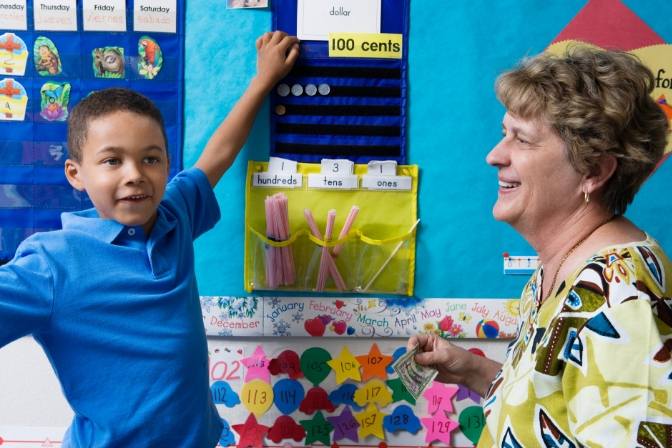
Use Supports for School Personnel to Create a Better IEP and Better Student Outcomes
Scenario: A child with autism attends school in a mainstream classroom. Although she is progressing academically, her teacher isn’t sure how to handle situations that make her upset, such as when she doesn’t understand an assignment or during unexpected changes to the classroom routine. She also has difficulty with organizing her work and interacting with peers when students are working together in the classroom or during non-academic activities like lunchtime.
Anxiety and meltdowns are common, and although calls home clearly show that the teacher is trying to help, she doesn’t seem to know enough about autism to understand how it affects her ability to cope with daily stressors, and how to effectively help the child.
The parents request an IEP meeting to address the concerns. What can be done to help the student?
Supports Are A Powerful Tool
While IEPs mainly focus on the needs of the student and the services and supports that they receive, including supports for school personnel can be a powerful tool for improving educational and behavioral outcomes. Although the IEP must include a place to describe these supports, they are often minimally addressed or vaguely worded in the IEP. This required component of the IEP represents an opportunity to advocate for both the child and the professionals who work with him or her.
Both the IDEA and New Jersey’s special education law N.J.A.C. 6A:14 require that the IEP contains:
A statement of the special education and related services and supplementary aids and services that shall be provided for the student, or on behalf of the student. Such special education and related services and supplementary aids and services shall be based, to the extent practicable, on peer reviewed research. A statement of the program modifications or supports for school personnel that shall be provided for the student:
i. To advance appropriately toward attaining the measurable annual academic and functional goals;
ii. To be involved and progress in the general education curriculum according to (e)1 above and to participate in extracurricular and other nonacademic activities; and
iii. To be educated and participate with other students with disabilities and nondisabled students
There may be a list of supports for the student, but little to none on behalf of the student.
Consider the Needs of School Personnel
Supports for school personnel can focus on opportunities for staff to learn 1) about a student’s disability, 2) how it can affect him or her in the school setting (academically, physically, behaviorally, socially, emotionally, etc.), 3) about evidence-based teaching strategies, and 4) how to access and receive training in specialized curricula.
Below are several examples:
-
Time for teachers and others working with the student, such as classroom aides, to attend conferences or training sessions to help them learn about autism, effective teaching strategies, and/or curriculum/classroom modifications
-
Provide a classroom aide for the teacher
-
Arrange for an autism specialist to provide direct training to teachers and staff about autism
-
Arrange for an outside professional to provide direct training to teachers and other staff members how to implement and collect data on a behavior plan
-
Training for teachers and/or support staff on how to use a child’s assistive technology device or apps
-
Regularly scheduled consultations between teachers, related service providers, parents, and supervisors to review interventions and the child’s progress
-
Training for classroom, recess, or school bus aides on strategies to respond safely to a behavioral crisis or challenging behaviors
Just like related services and supports for the student, the IEP should specifically describe the nature of the supports, as well as the frequency, duration, dates, and location of the supports being provided. This includes supports that are listed as consultation. When supports are consultative in nature, parents can request that the IEP specifies that a summary of each consultation is provided to the parent.
When school personnel better understand a child’s disability and are provided with the tools they need to effectively educate their students, it increases the likelihood that the student will meet the goals outlined in the IEP.
For more information about educational advocacy and IEPs, contact our Helpline.








